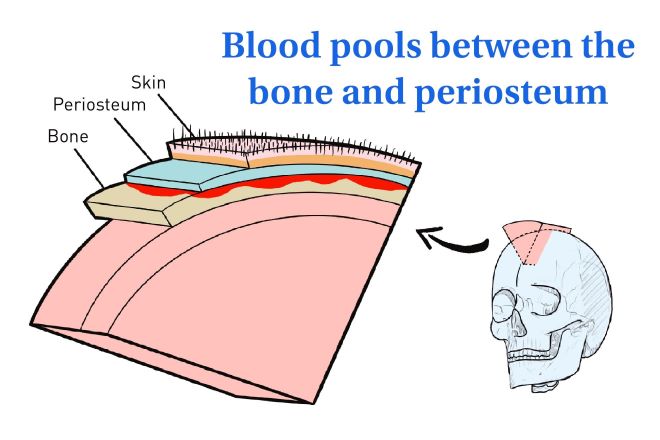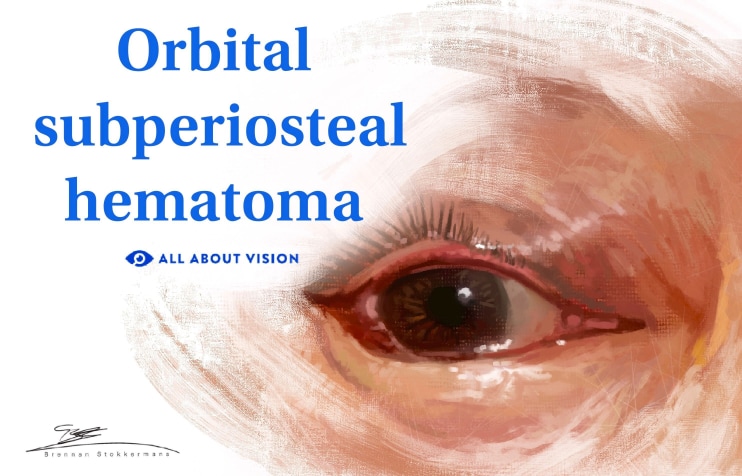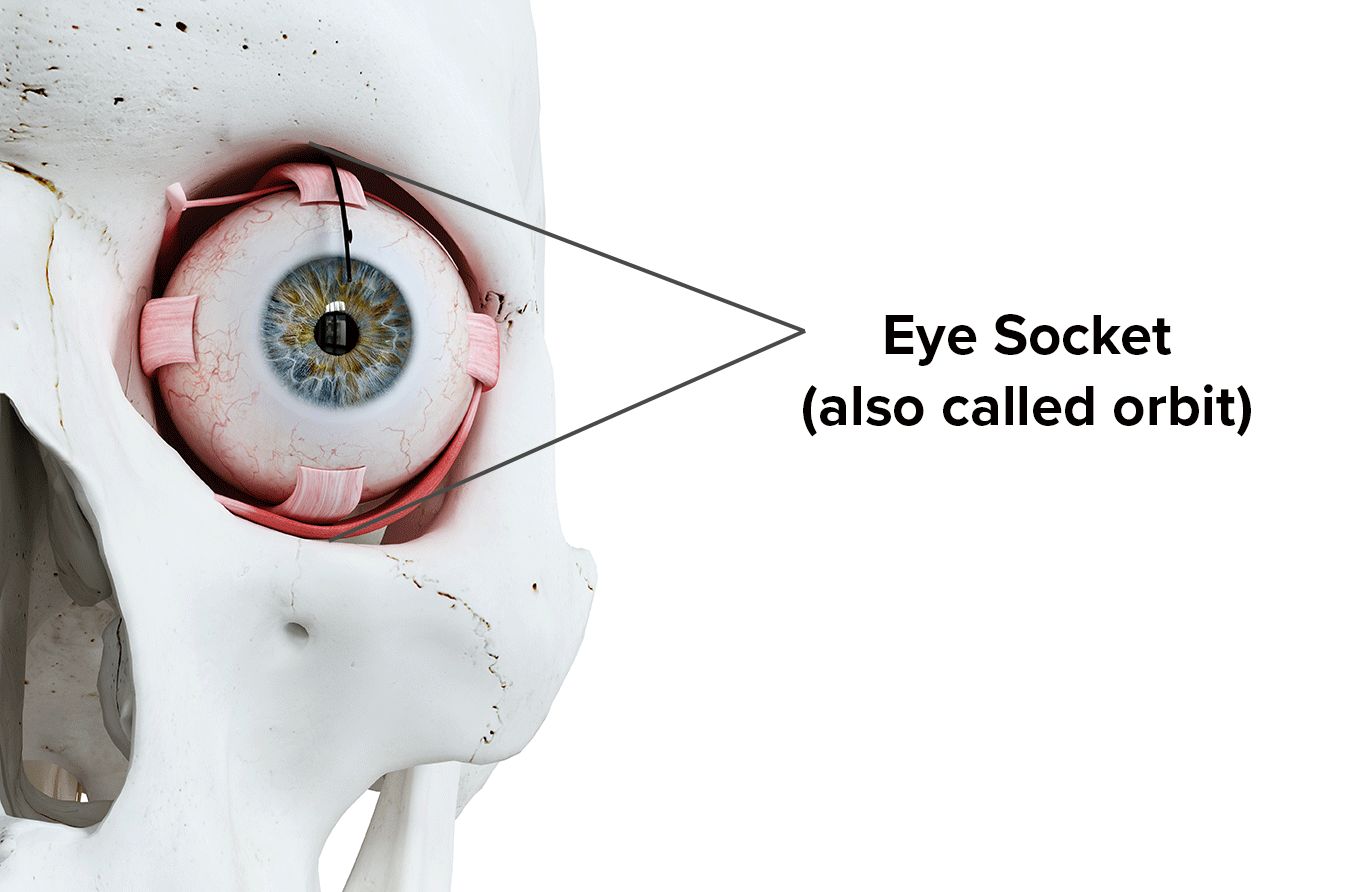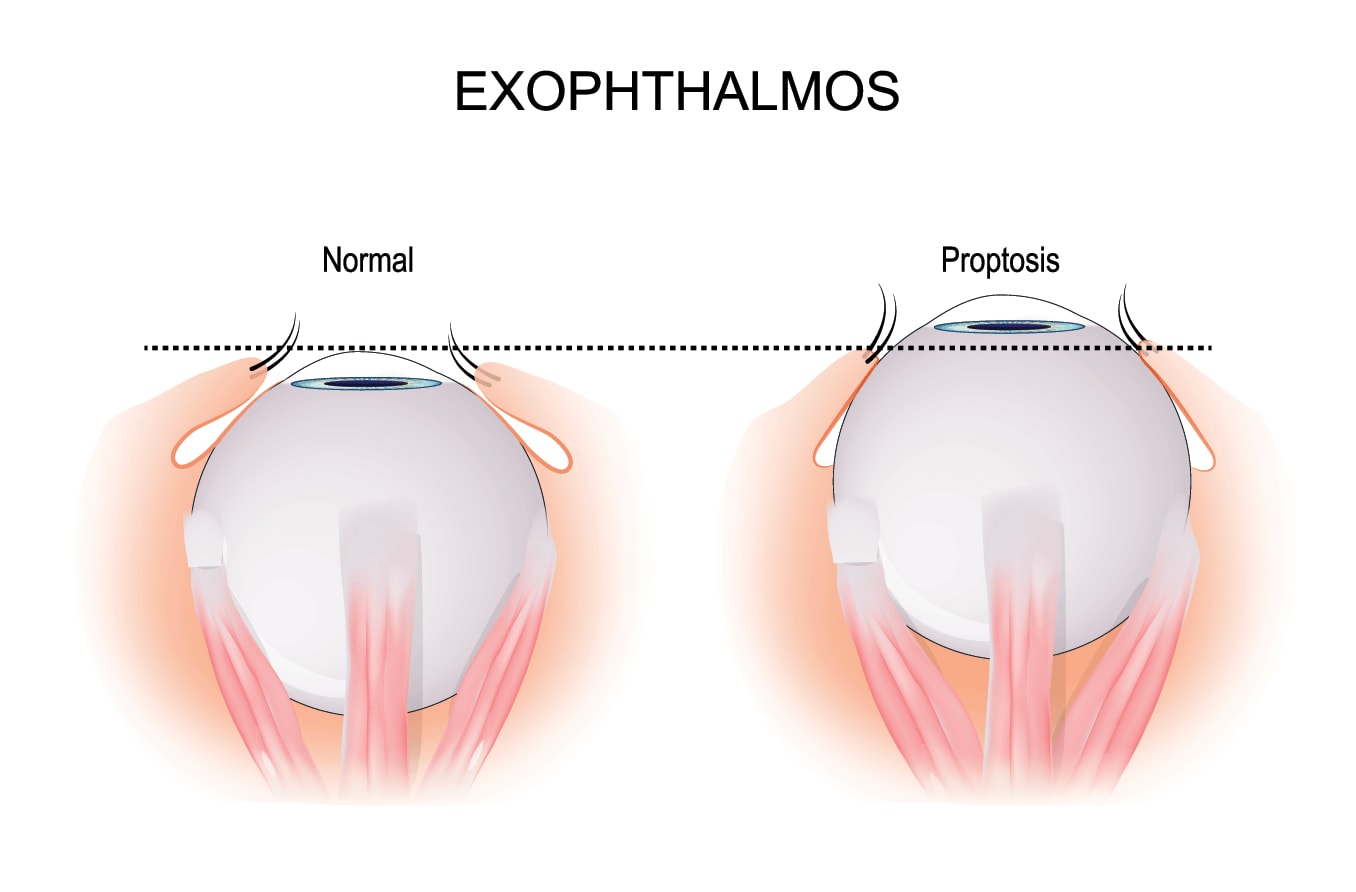What is a subperiosteal hematoma?
A subperiosteal hematoma occurs when blood leaks out of a vessel and collects between bone tissue and the periosteum, the membrane covering the bone. This condition can develop in various areas of the body. When it affects the eye socket (orbit), it is called an orbital subperiosteal hematoma (OSH).
This type of hematoma, also referred to as orbital subperiosteal hemorrhage, can cause swelling in the subperiosteal space, increasing pressure within the eye socket. As a result, the eyeball may protrude (a condition called proptosis), leading to various eye and vision issues.
If the hematoma becomes large enough, it can press on the optic nerve at the back of the eye, potentially causing permanent damage. The optic nerve sends electrical signals from the eye to the brain to process what you see. Damage to this nerve can impact your eyesight in several ways.
Without prompt diagnosis and treatment, an orbital subperiosteal hematoma can lead to vision loss.
An OSH can form anywhere around the eye socket. But it most often occurs in the superior (above the eye) and medial (toward the nose) portions of the orbit. This area has an extensive blood vessel network, which may increase the chance of OSH formation.
How common are orbital subperiosteal hematomas?
Orbital subperiosteal hematomas are an unusual occurrence. In fact, there are fewer than 20 documented cases of the condition. Since the overall frequency and rate of occurrence aren’t known, further research would be needed to gain a more comprehensive understanding.
The risk of experiencing an OSH decreases with age as the periosteum naturally becomes more firmly attached to the orbital bone. This reduces the potential space for blood to pool, making an OSH less likely to develop.
It’s important to note that a hematoma is not the same thing as a blood clot (thrombus):
- Hematoma – Occurs when blood leaks outside a vessel and accumulates in the surrounding tissue
- Blood clot – Forms inside a blood vessel when blood thickens to form a more solid mass
What causes orbital subperiosteal hematomas?
When traumatic impact occurs around the eye, blood vessels between the periosteum and orbital bone can burst. This causes blood to leak into this space, forming an orbital subperiosteal hematoma.
In some cases, an OSH develops due to a condition called a subgaleal hematoma with orbital extension. This occurs when blood pools between the skull’s periosteum and part of the scalp called the galeal aponeurosis. The blood can then spread forward into the space around the eye, causing an OSH.

Orbital subperiosteal hematomas can result from both traumatic and non-traumatic causes.
Trauma
Direct trauma to the face or head is the most common cause of an OSH. This is most often due to a broken bone around the eye socket. Incidents that may lead to a traumatic OSH include:
- Falls
- Blunt force impact from an object
- Sports-related injuries
- Motor vehicle accidents
Traumatic OSH is most commonly seen in young males who have experienced blunt trauma to the face.
Non-traumatic causes
An OSH can also result from a wide range of non-traumatic causes. These tend to happen more often in females and can include:
Increased venous pressure
A sudden rise in pressure within the veins of the head can cause the blood to leak into the surrounding tissues, leading to a hematoma. This pressure increase can be caused by factors, such as:
- Coughing
- Vomiting
- Scuba diving
- Weight lifting
- Valsalva maneuver (a breathing technique that involves forcefully exhaling air while keeping your mouth and nose closed)
The Valsalva maneuver may occur during activities like childbirth or weight lifting. In fact, OSH may happen during labor, likely due to this factor. The Valsalva maneuver during weight lifting is the most probable cause of OSH associated with increased venous pressure.
Sinusitis
Sinusitis is inflammation or infection within the sinus cavities. These are open spaces located in the skull bones near the forehead, eyes, nose and cheeks. Sinus inflammation can slow blood flow and cause swelling in the veins around the eyes. This can lead to blood clotting, which may increase the risk of blood vessel rupture in the periosteum, resulting in a hematoma.
Blood disorders
Certain blood disorders can contribute to the development of a subperiosteal hematoma, including:
- Clotting disorders – Conditions that impair normal blood clotting make a person prone to bleeding or bruising more easily, increasing the risk of experiencing a hematoma.
- Sickle cell disease – This condition alters the shape and function of red blood cells, causing them to clump together and prevent proper blood flow. This can lead to inflammation in bony areas, like the orbit, increasing the risk of hematoma formation.
Other systemic conditions
Several other medical conditions have been linked to orbital subperiosteal hematomas, including:
- Metabolic disorders
- Vascular conditions
- Certain cancers (including lung and chronic myelogenous leukemia)
- Scurvy (vitamin C deficiency)
- Liver disease
- Migraines
Ocular conditions
Some eye-related conditions may contribute to orbital subperiosteal hematomas, such as:
- Orbital infarction – Loss of blood flow to orbital structures
- Orbital cellulitis – An infection of the soft tissue surrounding the eye
- Endophthalmitis – Inflammation involving the vitreous and aqueous fluids in the eye. Infection is typically the cause of inflammation in this case.
Other causes
Additional factors that may lead to an OSH include:
- Surgery involving the eye or surrounding tissues
- Use of anticoagulation medications
An OSH may also be idiopathic, meaning the cause is unknown.
Signs you might have an orbital subperiosteal hematoma
An OSH can cause both observable signs (detected by a doctor) and symptoms (experienced by the patient).
Signs can include:
- Eye bulging (proptosis)
- Swelling and bruising around the eye
- Increased intraocular (eye) pressure
- Abnormal pupil response to light
- Difficulty pushing the eyeball back into its socket
Symptoms can involve:
- Difficulty moving the eye
- Pain in and around the eye
- Double vision (diplopia)
- Changes in color vision
- Reduced vision
If any of these signs or symptoms appear, it’s important to see your eye doctor as soon as possible.
Diagnosis
Early diagnosis of an orbital subperiosteal hematoma is essential to help prevent vision loss. If an OSH is suspected, your eye doctor will review your medical history and perform an eye exam.
During the exam, your doctor will look for signs of the condition, such as proptosis and swelling. They may evaluate eye movement and visual acuity, among other factors.
Your intraocular pressure (IOP) will also be measured. This is important because the optic nerve can be damaged not only by the hematoma pressing on it but by orbital congestion, which can raise IOP. If the pressure gets too high, it can also affect the optic nerve and lead to glaucoma-related damage.
Differential diagnosis
When diagnosing an OSH, your doctor may consider other conditions that have similar characteristics. These can include:
- Acute orbital hemorrhage – Bleeding within the orbit. This may be intraconal (within the muscle cone surrounding the optic nerve and other structures) or extraconal (outside this muscle cone).
- Subperiosteal abscess – An infection beneath the periosteum (the membrane covering the bone).
- Sinus mucocele – A mucus-filled cyst that originates in one of the sinus cavities.
- Eosinophilic granuloma – A rare type of benign tumor that develops in bone tissue.
Of these conditions, acute orbital hemorrhage is especially important to distinguish from OSH. It’s not as rare as OSH and can be caused by some of the same factors, such as trauma.
Imaging techniques
Imaging techniques may be used to confirm the presence of a hematoma between the orbital bone and its periosteum. These methods also allow eye doctors to examine the sinuses and other areas of the skull and brain to help determine an underlying cause. The imaging techniques used to help diagnose an OSH include:
- Computed tomography (CT) scans – These scans help doctors visualize the bones in the skull and determine the size and severity of an OSH. They are usually the first line of imaging performed when evaluating this condition.
- Magnetic resonance imaging (MRI) – These scans provide detailed images of anatomical structures, including soft tissues, and any bleeding. They may be used when a diagnosis cannot be determined with a CT scan.
Diagnostic imaging can also help doctors distinguish an OSH from other conditions that may cause similar signs or symptoms.
Treating a subperiosteal hematoma
Some cases of orbital subperiosteal hematoma resolve on their own. Depending on the circumstances, your doctor may decide to monitor the condition to see if it heals without treatment, especially if it involves small hematomas that don’t affect vision. Medications, such as corticosteroids, may be prescribed to help reduce inflammation.
If treatment is needed, it can vary based on the severity of the condition and risk for vision loss. Hematomas that threaten a person’s vision typically require treatment. Treatment options can involve:
IOP management
Managing high eye pressure is often an important aspect of treating OSH. Eye drops, such as brimonidine and dorzolamide/timolol, may be prescribed to help lower pressure in the eye.
IOP may also be lowered during fine-needle aspiration or surgical procedures.
Fine-needle aspiration (FNA)
FNA is a procedure in which a needle and syringe are used to remove blood from the periosteal space. It may not be ideal when blood clots are present or for treating hematomas that are actively bleeding.
Surgery
Surgical procedures are performed to drain blood from the subperiosteal space. This may involve an orbitotomy, where an incision is made into the orbital tissues, or sinus surgery.
Surgery may be needed for:
- Removing blood clots
- Placing a drain to remove the hematoma
- Repairing broken orbital bones
- Treating an OSH caused by sinusitis
Following treatment, your doctor will likely monitor the area for recurrence.
When to see a doctor
Early intervention is essential to preserve your eye and vision health if an orbital subperiosteal hematoma develops. While trauma is the most common cause, it can also arise from non-traumatic, less obvious factors.
If you suffer a facial or head injury, seek immediate medical care. Avoid applying pressure to the area or your eye unless directed by a medical professional. Be sure to follow any instructions provided by your health care team.
Changes in your eyes or vision should never be ignored, even if no injury occurred. If you experience eye bulging, pain or other OSH symptoms, contact your eye doctor right away for an evaluation.







